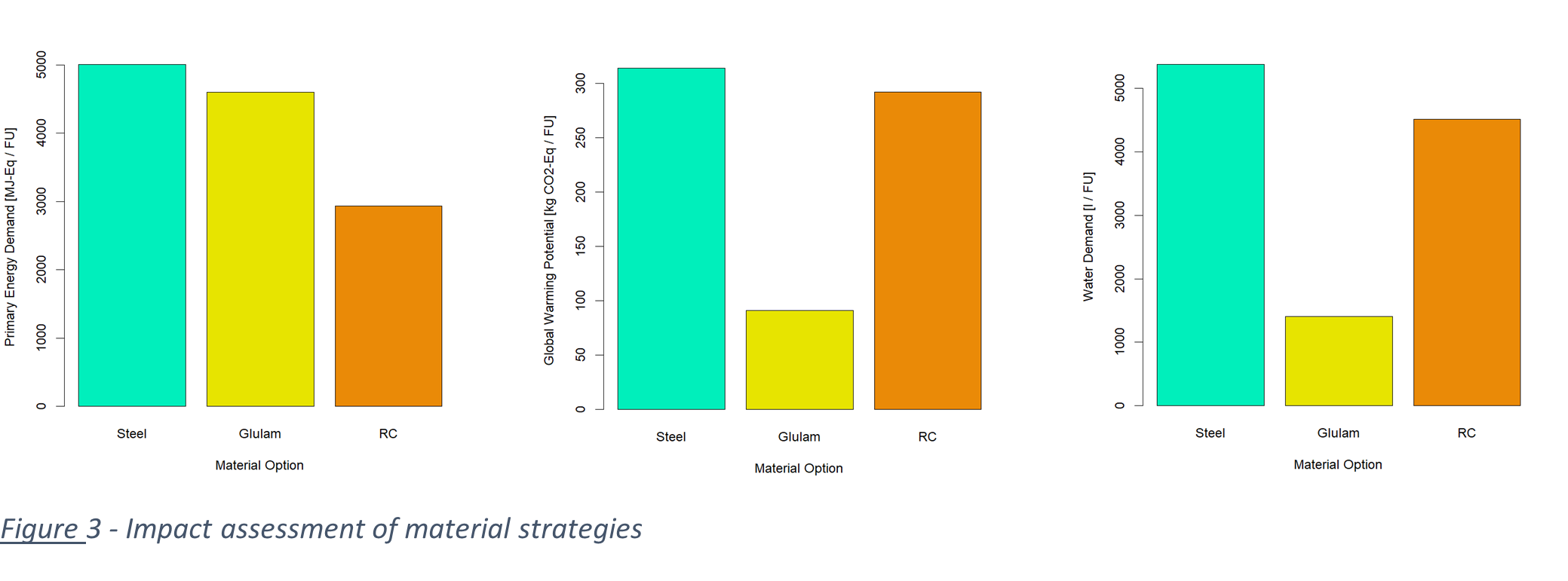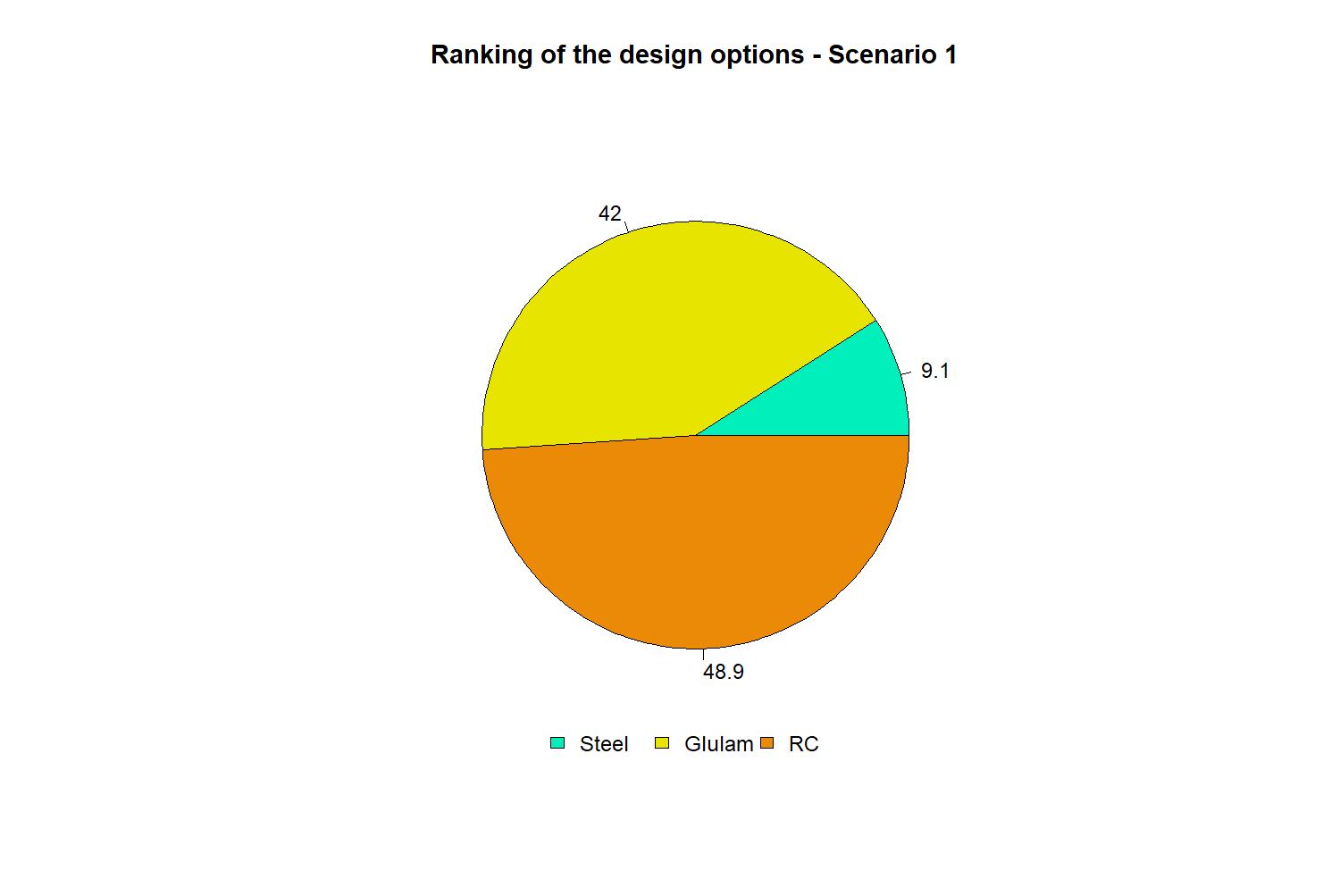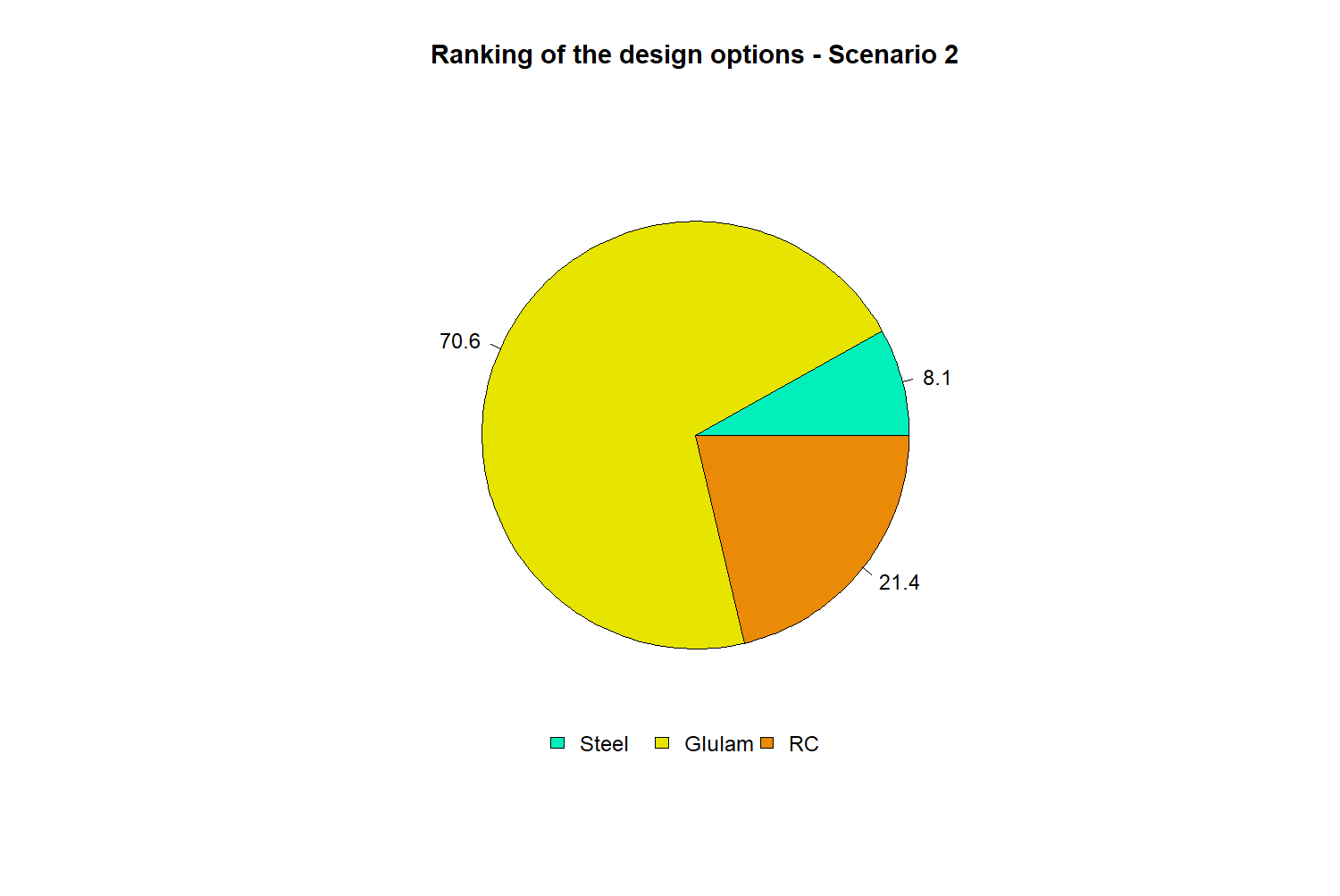In this assignment, I conducted a Life-Cycle Assessment (LCA) of load bearing beams in a warehouse, focusing on the primary energy demand, global warming potential and water demand. The study aimed to evaluate three design alternatives: Steel, Glulam and reinforced concrete.
Steel exhibits the highest primary energy consumption, reaching 5007.84 (MJ-Eq/fU). Glulam offers a reduction of roughly 8.2%, while reinforced concrete (RC) achieves a substantial decrease of 41.3% per functional unit compared to steel. Regarding global warming potential, steel generates the largest emissions, totaling 314.92 kg CO2-Eq./fU. Conversely, both RC and Glulam offer reductions throughout their lifecycles: 7.1% for RC and a significant 71% for Glulam. In terms of water usage, steel has the highest demand at 5380.92 l/fU. RC lowers this by approximately 16.1%, while Glulam achieves a reduction of about 73.8%.
The first scenario prioritizes energy efficiency within the project’s sustainability targets. The focus is on minimizing primary energy demand (PED) throughout the beam’s lifecycle, from material sourcing and manufacturing to construction, operation, and eventual disposal. While global warming potential (GWP) and water demand (WD) remain relevant, they are considered somewhat less critical to the project’s overall sustainability performance and are weighed equally against each other.
The second scenario emphasizes maximizing global warming potential (GWP) as the most critical factor, outweighing both primary energy demand (PED) and water demand (WD). The rationale is that the project’s core objective is climate change mitigation through greenhouse gas emission reduction. Choosing a material strategy with the lowest GWP is seen as the most effective way to contribute to this goal. While PED and WD are still considered, their impact on overall emissions is deemed less significant compared to addressing GWP.
The analysis reveals that steel beams have the highest primary energy demand, water usage, and global warming potential. Comparing Glulam and reinforced concrete (RC), a trade-off emerges. Glulam significantly reduces global warming potential and water demand, but RC has considerably lower primary energy consumption.
These findings are then applied to two multi-criteria decision-making scenarios. Since these scenarios involve balancing multiple factors, the relative importance of each criterion is key. Scenario 1 prioritizes primary energy demand over water consumption and global warming potential. In this case, RC beams (48.9%) are slightly favored over Glulam (42%). Conversely, if global warming potential is the primary concern, Glulam (70.6%) becomes the strongly preferred option, significantly outweighing RC (21.4%) (Figure 5). As expected, steel beams are not a preferred option in either scenario due to their inferior performance across all criteria.


